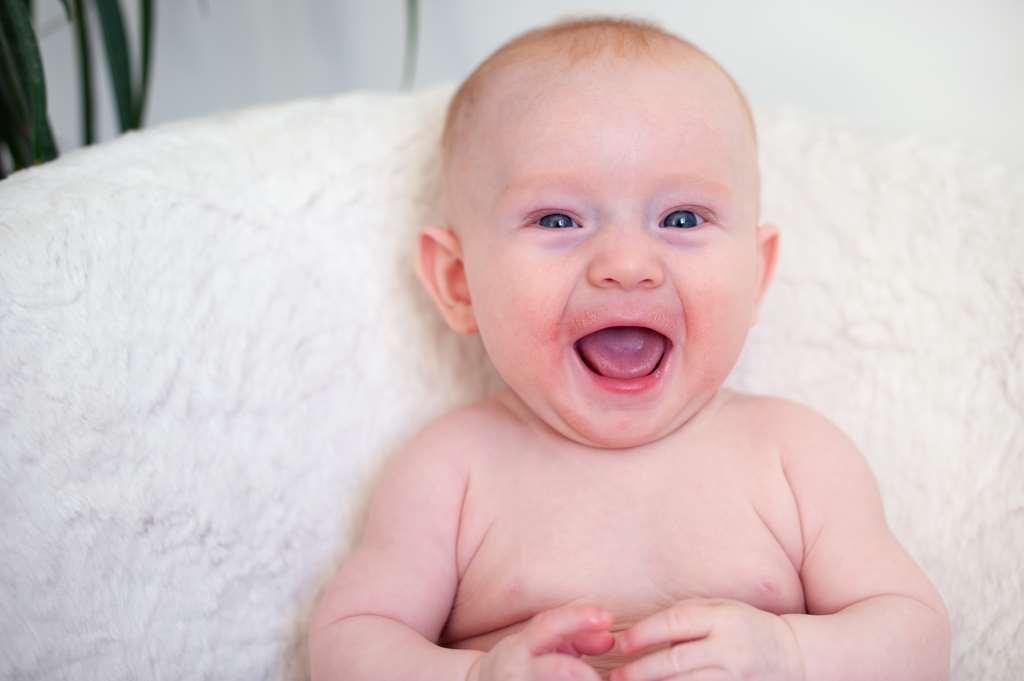Drool Rashes: What You Need to Know

What is a Drool Rash?
Skin irritation caused by constant contact with saliva is known as a drool rash. A drool rash can appear around the mouth and on the cheeks, in the folds of skin on your baby’s neck, and on your baby’s chest as a result of the skin being continuously wet with saliva. These patches of irritated skin may be moist or dry. While drool rash is not contagious, the red, itchy, bumpy patches on your baby’s skin will be uncomfortable for them.
What Causes Drooling?
Drooling is a natural occurrence. Your baby’s salivary glands typically begin to function between 2 and 3 months of age. It is often a side effect of teething, when a baby’s teeth begin to emerge through their gums. However, your baby may begin drooling long before the teeth come in or continue for months after. Babies begin to stop drooling around the ages of 15 to 18 months old.
While drooling, also known as sialorrhea, is common in healthy infants, excessive saliva contact frequently irritates the skin and causes drool rash. Drool rashes typically present as flat or slightly raised patches of skin. The skin may have a chapped appearance or have small, red bumps.
At Entirely Kids Pediatrics, we prioritize your child’s health by offering expert guidance on common conditions like drool rashes. Our dedicated team is always here to help you navigate your child’s care with ease.
Drool Rash Prevention
It’s difficult to prevent a drool rash because it’s difficult to keep your baby from drooling! Besides teething, babies may also drool for other reasons:
- tendency to keep their mouth slightly open
- a limited ability to swallow
- no front teeth

Here are some tips to that can help to prevent a drool rash:
- Keep a soft cloth on hand to gently wipe away any drool you see.
- Wipe your baby’s face and the skin folds of the neck after feedings.
- Keep your baby’s skin clean and as dry as you can. If you have to use a damp cloth to get them clean after a feeding, try to use soft pressure and a dabbing motion to avoid irritating your baby’s skin. It’s best to use water to dampen the cloth, as opposed to soap, which can also cause irritation.
- Use a waterproof or absorbent bib on the baby to help prevent saliva from running down under their chin or getting on their chest and clothing. Wet material rubbing against your baby’s skin often causes uncomfortable chafing and a drool rash. Change bibs as soon as they become wet with drool.
- Change your baby into clean, dry clothes whenever their clothing becomes wet from saliva.
Drool Rash Treatment
There are several simple actions you can take to reduce the discomfort your baby is experiencing from drool rash. Your primary goal is to keep the baby’s skin dry throughout the day and prevent more skin irritation from developing.
- Gently wash any irritated areas of skin with warm water twice a day. Softly pat the skin dry rather than rubbing. Be sure your baby’s skin is completely dry.
- As soon as any drool appears on your baby’s skin, wipe it away with a soft cloth to prevent further irritation to the area.
- If teething seems to be the cause of the excess saliva, try giving your baby a teething toy. Cold toys such as a teething ring or a wet washcloth kept in the refrigerator may be particularly soothing to them. Be sure to pat the skin around the mouth dry afterwards.
- Apply a barrier cream or ointment to the rash areas to encourage the baby’s skin to heal. Please contact Dr. Leung for recommendations before using any new products, especially near your baby’s mouth. Avoid using lotions on the irritated skin.
 It can be helpful to use fragrance-free laundry detergents, soaps, and baby washes made for sensitive skin. You’ll want to avoid using any products that are harsh, drying, or heavily fragranced, as these can cause irritation. Also, be sure to always use clean and sterilized baby bottles and pacifiers. If you’re using any items that appear to make the rash worse, discontinue use immediately.
It can be helpful to use fragrance-free laundry detergents, soaps, and baby washes made for sensitive skin. You’ll want to avoid using any products that are harsh, drying, or heavily fragranced, as these can cause irritation. Also, be sure to always use clean and sterilized baby bottles and pacifiers. If you’re using any items that appear to make the rash worse, discontinue use immediately.
Call Us with Any Concerns
In most cases, a drool rash is a minor irritation that heals with consistent at-home treatment. However, if you notice any of the following, please call our office immediately for a same-day sick visit:
- breathing or swallowing seems labored
- baby is refusing food or eating/drinking less
- baby is holding his or her head in a strange position
- fever
- baby seems unusually irritable or fussy
- the irritated skin is cracked, weeping, or causing your baby pain
If the rash doesn’t improve after five to seven days of home treatment, please make an appointment with our office, especially if the rash is severe, getting worse, or seems unusually itchy or painful. In some situations, Dr. Leung may need to prescribe creams that can help your baby’s drool rash heal faster and make them more comfortable. As always, we’re here for our families, so if you have any concerns or questions, we want to hear from you! Please call: 469-425-3600.
